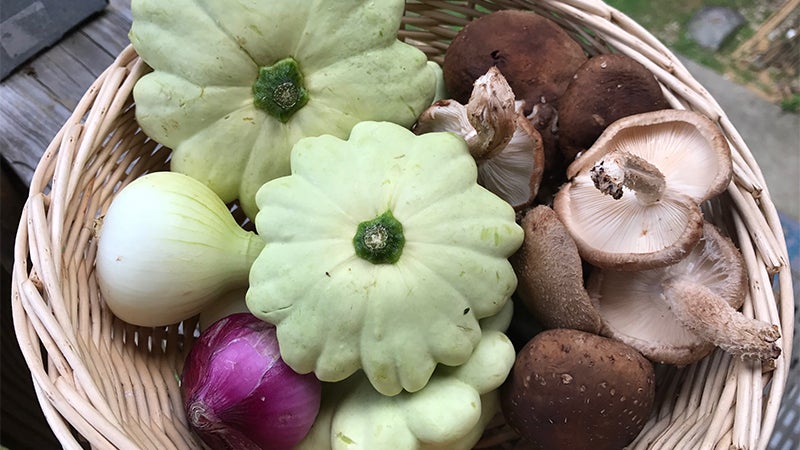Heirloom and heritage: Bring back abundance and diversity in food system
Published 11:08 am Tuesday, November 12, 2013
In a spirited conversation last week about local, pastured and drug-free hens and hoofs, four of us gathered around atable agreed that we don’t like to eat meats if we don’t know where they came from.
We darted back and forth about if and when we resort to a fast-food meal due to traveling thousands of miles outside of our community food-system, which ones were the lesser of the evils. Many choices landed on chicken over beef or veggie over meat, even if it meant a piece of wilted lettuce and a transparent slice of tomato on a bun.
Our Saluda friend, Susan, shared the hilarious story of when she was fresh out of Harvard and celebrating as a troubadour crossing Irish soils, years and years ago she came upon a sign that said “Free-Range Eggs”, thinking it meant “No Charge” and loved the generous Irish spirit even more.
“Range Chickens – FREE” is how we humorously concluded they understood the message to be! But in this day of genetically-modified foods and the insecurities and untold risks that they bring, sourcing animal proteins FREE of laboratory inputs is a journey truly worth embarking on.
As one learns that commercially –produced animals can no longer mate naturally, or survive life in a natural setting, or live as freely as possible until the moment of their sacrifice, a guilt sets in and we become willing to educate ourselves and our pocketbooks down a different path, or we stop eating meat altogether, or worse, choose to turn a away from the truth and dig our heels in that these practices are necessary to feed ourselves and the world, cheaply.
Let’s opt, in this case, for traveling the path of education on genetically modified plants and animals. Non-GMO plants and animals begin as heirloom seeds and heritage breeds. For example, let’s take the poultry. Heritage poultry is defined by the historic, range-based production system in which it is raised.
Birds must meet every aspect of the criteria determined by the APA (American Poultry Association).
They must be the result of naturally mating pairs of both grandparent and parent stock and they must have a long, productive outdoor lifespan and the genetic makeup that allows them to withstand the environment rigors of the outdoors.
They must also have a slow growth rate in order to develop a strong skeletal structure and healthy organs prior to building muscle mass.
These birds, when mating with their likeness and when feeding on organic, non-GMO chicken feed, produce heritage eggs in which we either hatch or eat.
What makes these birds different from Hybrid Broiler Chickens, those offerings on Styrofoam trays under plastic wrap in large super-markets and box stores? A hybrid broiler raised for commercial processing lines has a 5 to 12 week lifespan and is 100 percent from a factory hybrid as a seven-way cross.
Their genetics are owned by two private corporations who don’t want anyone to know what they are fed or all the chemicals they are processed in. They have inadequate immune systems, store more fat in their meat than protein and are greatly more susceptible to pathogens. Their rapid growth rate is 300 times a heritage or standard bred and they are unable to mate or fly.
They are commonly infused with antibiotics and their breeder feed and water is greatly restricted.
They are completely and totally inbred.
Heritage and standard-breed birds are more expensive. They have a natural grow out speed which increases their feed cost. They only hatch in season, which limits their egg availability, but they lay for many long, healthy years.
They are bio-diverse, unmodified, and if organic, they have no laboratory created unnatural inputs in their systems.
Their care and production usually lies in the hands of a small family farmer you may know, who with total awareness and appreciation, processed the bird for your family’s consumption with a sense of morality toward the sentient being.
Their meat is 21 percent higher in protein and 22 percent lower in fat. They can fly and jump and roost into old age.
They have a lower carbon foot-print, taste better and are better for the farmer, the eater, and the planet. They are Range Birds free of Frankenstein production practices and are available in Polk County and beyond.
Travel the road of education and advocacy for heirloom and heritage plants and animals.


